Bread knife uses extend beyond slicing loaves; it's perfect for slicing cakes, tomatoes, and delicate pastries too!
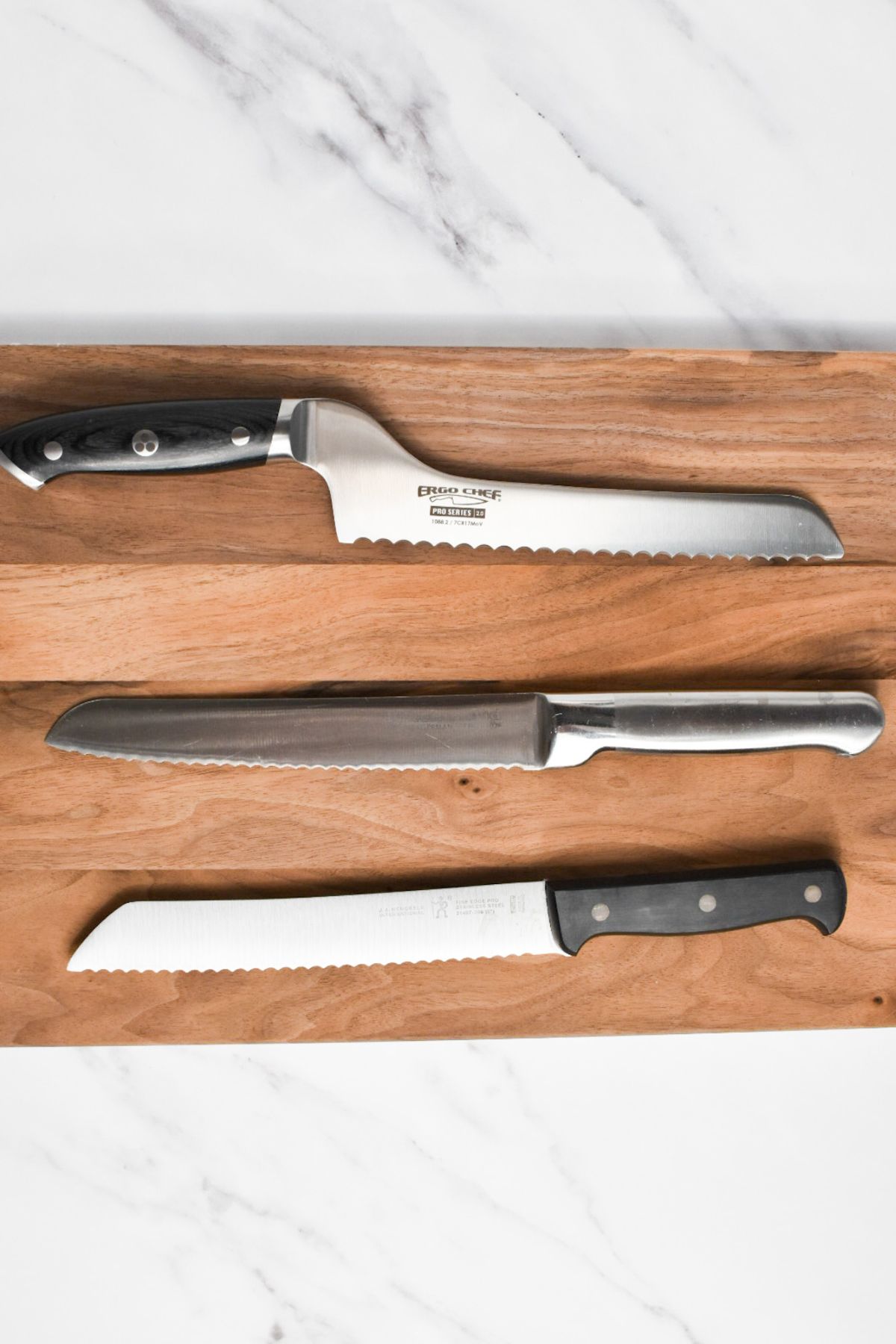
From the crustiest loaves of bread to the most delicate fruits and pastries, the versatile bread knife cuts through them all with ease, delivering uniform slices and clean cuts.
As an indispensable tool for both home cooks and professional chefs, the bread knife's unique design and functionality make it a perfect addition to any kitchen blade collection.
So, whether you're a seasoned chef or just starting your culinary journey, having the best bread knife at your disposal is the key to achieving perfect slices and better results in your cooking endeavors.
What is a Bread Knife?
In the world of kitchen knives, one tool stands out for its distinctive design and unparalleled functionality: the serrated bread knife.
This essential tool features a serrated blade, equipped with a series of sharp teeth along its edge. This unique design sets it apart from traditional kitchen knives like chef's knives and paring knives.
The serrated bread knife boasts a long blade with a sharp edge, often made from stainless steel, which is perfect for tackling the tough crusts of bread and other food items.
With so many options on the market, selecting the best bread knife can be overwhelming. Look for high-quality bread knives with long blade lengths and well-defined serrations.
An offset handle or offset bread knife design can provide better control and visibility while cutting. This guide will introduce you to ways to use a bread knife and what to look for when purchasing a quality bread knife.

What is a Bread Knife is Used For?
The primary purpose of a bread knife is in its name - it's designed for cutting bread. But its utility extends far beyond just baguettes and loaves.
The serrated bread knife's saw-like edge is perfect for handling delicate foods like soft breads, pastries, sandwiches, and even fruits ensuring a clean cut without squishing or tearing.
Home cooks often face the challenge of slicing through various types of breads, including crusty artisan loaves, chewy New York-style bagels and delicate sandwich bread. This is where the bread knife shines, providing the cleanest and most uniform slices without excessive crumbs.
Using a Bread Knife for Bread
When it comes to slicing bread, the serrated bread knife is your best friend. Its long blade and serrated edge make quick work of hard crusts, leaving you with perfect slices every time.
To achieve nice cuts, use a gentle sawing motion while applying a light downward pressure. This technique prevents the bread from getting crushed while delivering a clean cut.
If you're dealing with crusty loaves of bread, the serrated edge of the bread knife will make the process effortless, ensuring you get the slices you desire without damaging the bread's interior.
The longer blade works very well on delicate bread such as my family's favorite Homemade Sandwich Bread. The soft interior can easily be damaged by other knives, but by using the bread knife blade with a very gentle pressure I can get perfect sandwich slices without squishing the bread.

Using a Bread Knife for Fruits and Veggies
The versatility of the bread knife doesn't stop at bread alone. It's also an excellent tool for slicing soft fruits and vegetables with precision.
Items like ripe tomatoes, delicate pastries, and even soft ingredients for salads can be easily handled by the serrated edge.
The pointed tip and long blade of the bread knife provide the control needed to create thin slices of fruits and vegetables, making it a top choice for preparing salads and other delicate dishes.
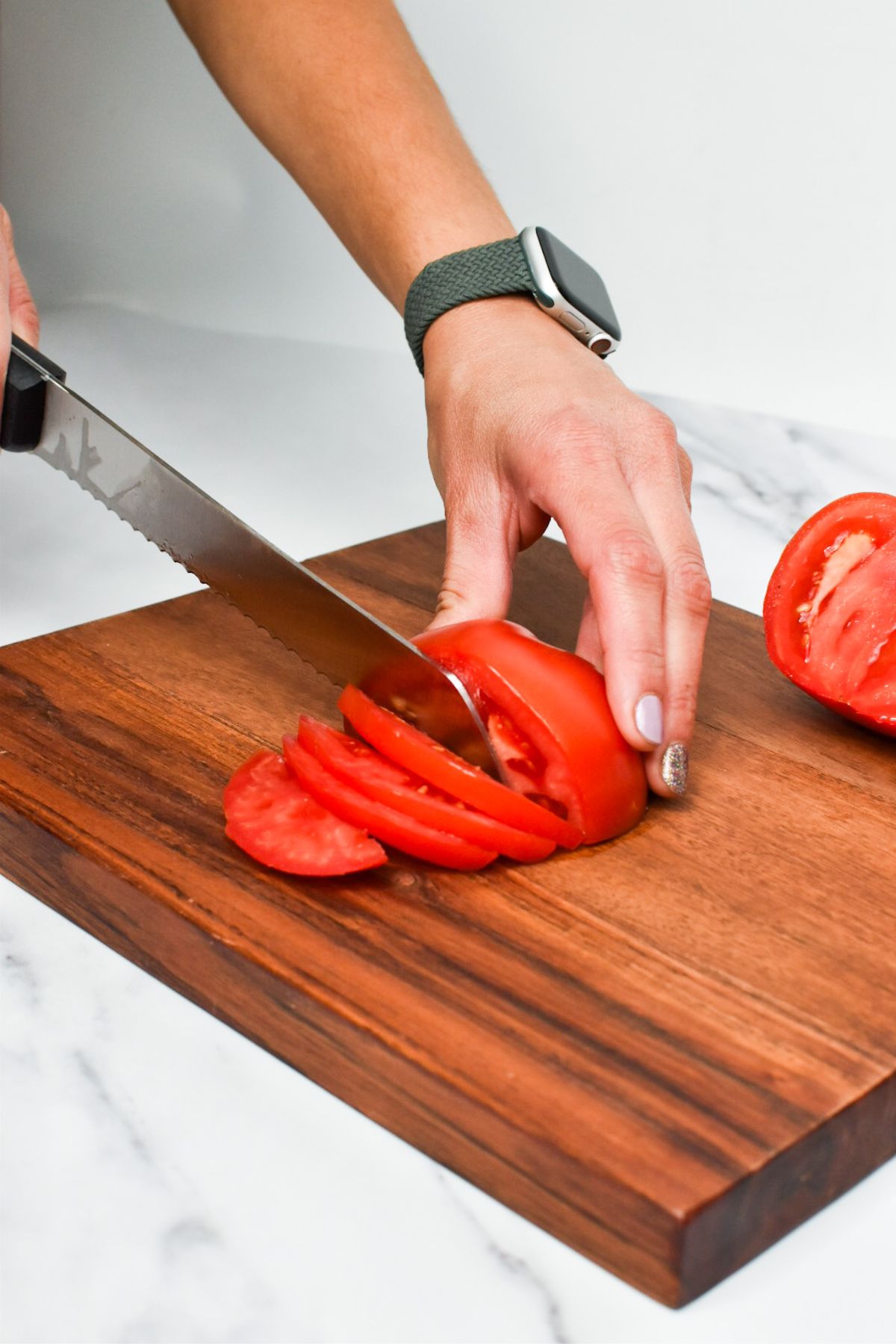
Using a Bread Knife for Desserts
When it comes to slicing desserts, the serrated bread knife is a must-have. Layer cakes, with their varying textures and layers, can be a challenge for other knives. But with the serrated edge of the bread knife, you can make clean, even cuts through the cake to make even layers for frosting.
Whether you're dealing with creamy cheesecakes or fluffy sponge cakes, the bread knife's saw-like edge will make quick and beautiful work of dessert preparation.

Using a Bread Knife for Meats
While it might seem unconventional, the bread knife can also play a role in meat preparation. When you're dealing with tough cuts of meat or even a roast with a crispy outer layer, the serrated bread knife can come to the rescue.
Its serrated edge allows you to effortlessly cut through the meat's exterior, whether it's a hard crust or crispy skin. However, for more intricate meat cuts, a carving knife or slicing knife might still be the better option.
How to Care for a Bread Knife
To ensure your bread knife maintains its effectiveness, proper care is essential. After each use, wash the knife by hand with mild soap and warm water, then dry it promptly to prevent any potential corrosion.
Avoid using abrasive materials on the blade to maintain its sharpness and longevity. Store the bread knife in a knife block or on a magnetic strip, keeping it separate from other kitchen knives to prevent damage to the blade.
How to Sharpen a Bread Knife
Over time, even the best bread knives will dull. But don't worry, it's possible to sharpen a serrated bread knife with a little effort. Special serrated knife sharpeners are available, designed to accommodate the unique blade edge of a bread knife.
Alternatively, you can send your knife to a professional sharpener. Keep in mind that frequent sharpening might not be necessary, as the serrated edge holds its sharpness for a long time compared to straight-edged blades.
How to Choose the Right Bread Knife
Consider the types of bread you frequently encounter in your kitchen; a serrated bread knife with smaller serrations might be better for soft breads, while larger serrations are ideal for crusty artisan bread.
Remember, investing in a high-quality bread knife can make a significant difference in the quality of your cuts and the overall enjoyment of your kitchen experience.
Selecting the ideal bread knife involves a delicate balance between factors such as blade length, price, and quality. Each of these elements contributes to the overall performance and satisfaction you'll experience while using the knife in your kitchen. Here's a closer look at how to navigate the interplay between length, price, and quality when choosing the perfect bread knife.
Blade Length
Blade length is a critical consideration when choosing a bread knife. The length of the blade determines the knife's versatility and its ability to handle various types of bread, from delicate loaves to hearty artisan crusts.
Longer blades offer more reach and can handle larger loaves, making them a great choice for professional chefs or avid home bakers. On the other hand, shorter blades provide more control and are better suited for precision cutting.
When selecting the blade length, think about the types of bread you frequently work with. If you often deal with long baguettes or oversized loaves, a longer blade, typically around 10 to 12 inches, might be more appropriate.
For everyday bread slicing, a blade length of around 8 to 9 inches should suffice. Consider your cutting habits and the size of the bread you commonly encounter to make an informed choice.

Price
Price is another factor that can greatly influence your decision when choosing a bread knife. While high-quality knives tend to come with a higher price tag, it's essential to find a balance between your budget and the knife's performance. Keep in mind that a well-made bread knife can last for many years if properly cared for, making it a worthwhile investment.
If you're a casual home cook who primarily uses the knife for occasional bread slicing, you can find decent options in the mid-price range. These knives offer a good balance of quality and affordability.
On the other hand, if you're a passionate baker or chef who frequently works with a variety of bread and baked goods, investing in a higher-priced, high-quality bread knife could yield better long-term results.
I've owned this KitchenAid bread knife for many years and have been happy with the quality. I just purchased this Ergo Chef Offset Bread Knife and it works really well too.
Quality
Quality should never be compromised when choosing a bread knife. A high-quality bread knife ensures longevity, sharpness, and overall performance.
Look for knives made from premium materials, such as high-carbon stainless steel, which combines durability and corrosion resistance. Stainless steel blades also maintain their sharp edge for a more extended period, reducing the need for frequent sharpening.
Pay attention to the construction of the knife. A full tang design, where the blade extends through the handle, is a sign of a well-constructed knife that offers balance and durability.
Additionally, consider the craftsmanship of the serrations on the blade. Well-defined and evenly spaced serrations are essential for achieving clean and consistent cuts.


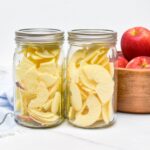
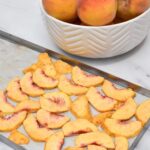










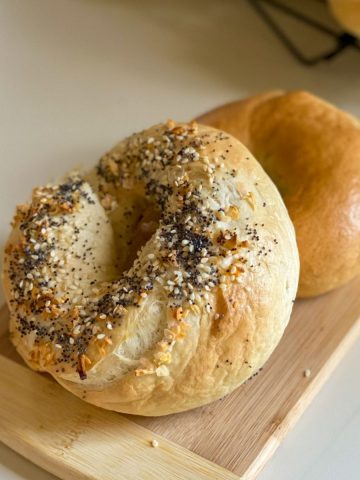
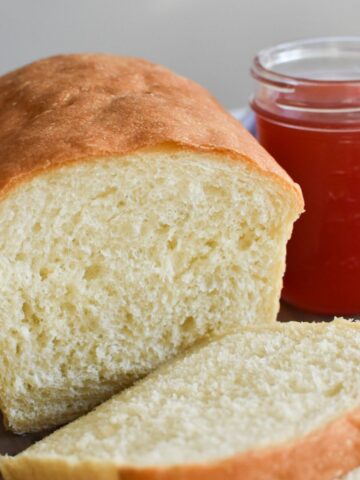






Thomas says
I love your bagel recipe and was looking for a good knife to cut through the chewy DELICIOUS bagels and just bought the KitchenAid one you recommend. I can't wait to get it.
Jen Talley says
I think you will really like it, Thomas!